You are enjoying the game because of the intensity and suddenly stop the game for some reason. You do not understand what is happening in the game.
If you feel a sudden discomfort because you don’t know volleyball rules and regulations and want to know them now, you are at the right place.
Whether you are a coach, athlete, parent, fan, or just a recreational player, you will get all your answers.
Basic Volleyball Rules for Playing the Game

With its SEASON spanning the entire summer, indoor volleyball follows specific rules designed to guarantee fair play and competitive balance. The players need to master the rules of the sports to give their team the best chance to win.
Below are the rules you need to know.
1. The Serving Rules
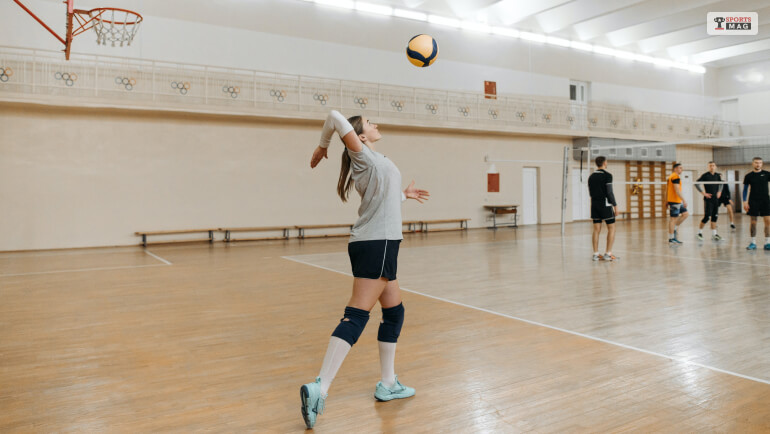
There are no particular rules for serving. It is up to the player how they want to serve. Whether they are serving overhand or underhand, they just need to ensure that they are not stepping on the serving line.
Unlike tennis rules, in volleyball rules, the server is allowed once to get the ball over the net. After that, the server can serve the ball anywhere as long as it’s over the net and inside the court’s boundary.
If the server cannot serve the ball over the net or touches the line, the referee will stop the game and give points to the receiving team and the right to serve the ball.
2. The Double Touch Rules

The volleyball states under no circumstances is a player allowed to hit the ball two consecutive times with no other hits in between by another player.
This rule is implemented to ensure this game remains a team sport. If a player can hit the ball multiple times, why would they need their teammates to return the ball?
3. Team Rotation Rules
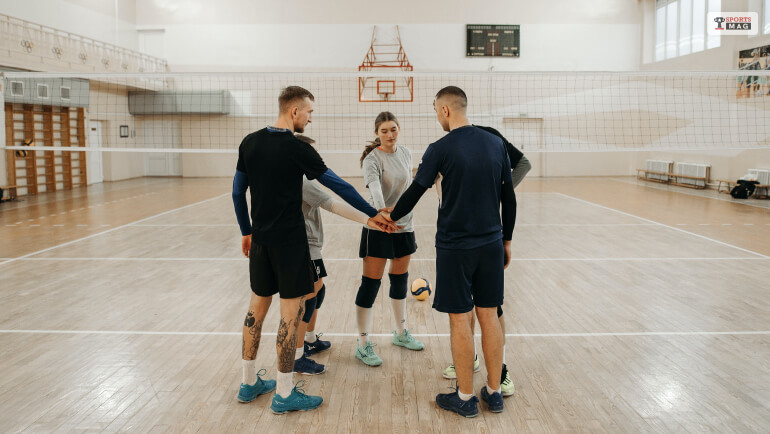
During any game, the team must rotate their players after receiving a point while defending. For example, the rotation of the volleyball team is gained after they have gained the serve.
The rotation is there to ensure that every player plays all the positions. While the rotation is done, it needs to be clockwise.
The rotation is also the key to keeping the game fair, as a set position would mean that the strongest server will keep hitting the serve.
4. Net Contact Rules

The player or ball is bound to touch the net during a match. For such instances, volleyball rules have clearly mentioned the action that can be taken.
For example, the player is exempted from reaching over the bet unless they are trying to block the ball or are in the follow-through after hitting the ball. In fact, a player is allowed to go under the net if it doesn’t interfere with the other team.
However, if a player is caught hitting the net intentionally, the other side will win a point.
On the other hand, if the ball hits the net and falls over the other side, it will be considered a live ball.
5. Illegal Hits

There are different types of hits that are considered illegal and result in the opposing team receiving a point.
Now, what exactly are illegal hits?
An illegal hit is any hit that involves an open palm touching the ball. That means if a player is seen carrying the ball and throwing the ball, the act will be considered illegal. Illegal hits always end your team losing your point.
6. Scoring Rules
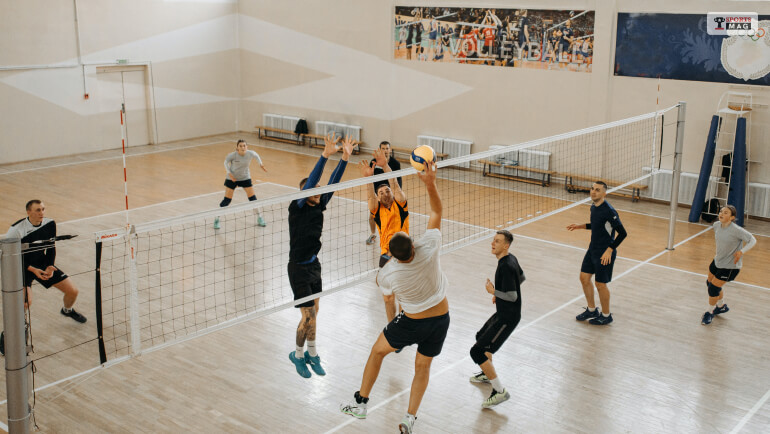
During the volleyball match, any team that reaches 25 points with at least an advantage of 2 points wins the game. This means that if a team wins the game, the scoreboard will look something like 25-23. The winner of the volleyball match is the team that wins 2 sets out of three.
However, in rare instances, if the result is a tie. Then, the team has to play a tie-breaking round with only 15 points.
7. Player Number Rules
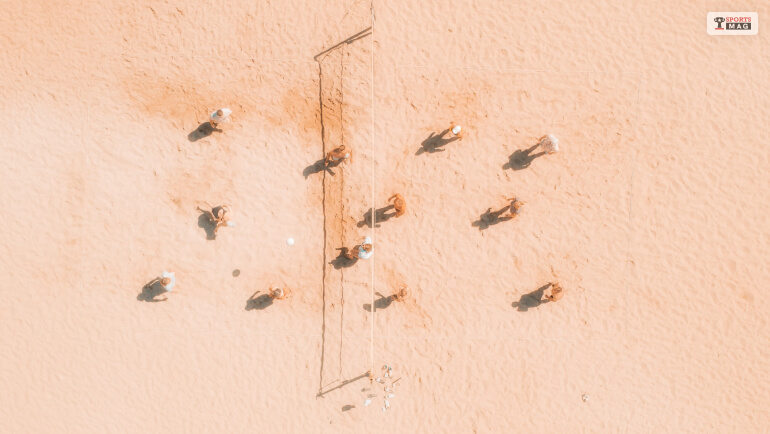
Any team can have a maximum of six players on the court at any time of the game. This ensures that the team can place three players in the back row and three players in the front.
The coaches are allowed to sub for the players. However, while subbing for the players, the coaches need to be careful about the level of the game.
Each position of the six players has a corresponding name, and the team will experience penalties if they have more than six players on the court.
8. Maximum Number Of Hits
In an indoor volleyball game, a team can use only three hits to return the ball to the other side. This rule ensures that the game is kept short and no teams are taking too much time to return the ball.
If the team takes more than three hits to return the ball, the referee will stop the game and give the opposition a point. Coaches usually teach their team to use the three hits to their advantage and set the game accordingly.
9. Court Regulations
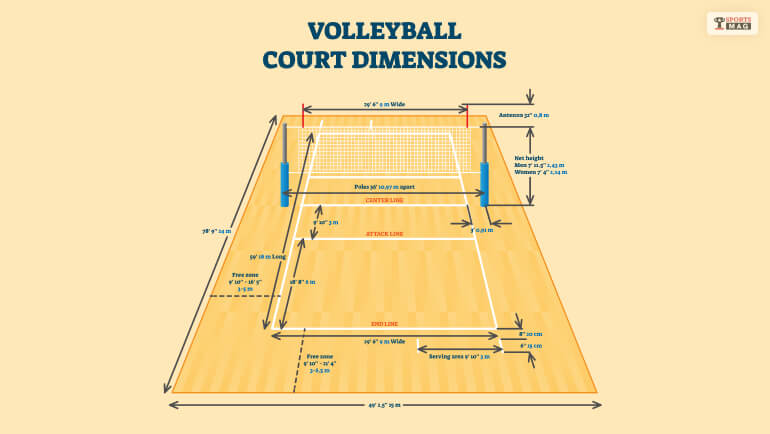
Similar to any court game, volleyball rules also have court regulations. The court must be 9 meters wide and 19 meters long. The attack line should be three meters from the center line. The volleyball sports community regulates this rule to ensure every team is playing on the same court.
How To Play Volleyball?
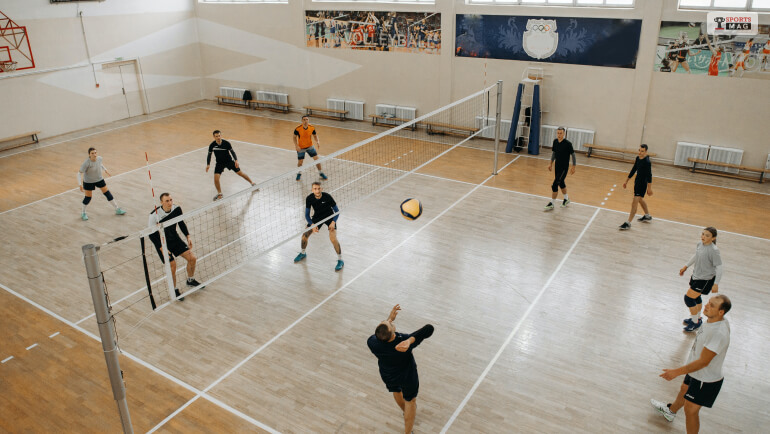
A volleyball game consists of teams playing against each other. The six players have their own separate position. The name of the positions are as follows:
- Setter.
- Outside hitter.
- Mid blocker.
- Opposite hitter.
- Serving specialist.
- Libero.
A toss is made to decide which side will serve first to start the game. Then the two teams will start to rally until a fault occurs.
While each team is trying its best to return the ball, they can hit it only three times consecutively.
Volleyball matches are made up of three or five sets. Three set matches consist of two sets with 25 points and the third set with 15 points.
On the other hand, five-set matches have 4 sets with 35 points, and the fifth set has 15 points. The team needs to maintain a two-point advantage to win. The team with the most sets wins the match.
Volleyball Rules’ Violations
- Stepping on the service line when doing a service is considered a fault, and the opposite ends up getting the point.
- Failure to serve the ball over the net.
- If you contact the ball illegally – carrying, throwing, double touching, or lifting.
- Touching the net while the ball is in the play.
- Blocking the ball coming from the opponent by reaching over the net and when the ball is yet to be touched by the opponent three times.
- Crossing the coastline with the exception of hand and foot.
- Servicing the ball out of rotation.
- Back row player blocking. This is an illegal block.
- Back row player attaching Back row player attacking a ball inside the front zone.
Read Also:






